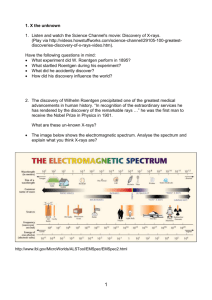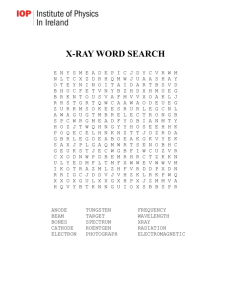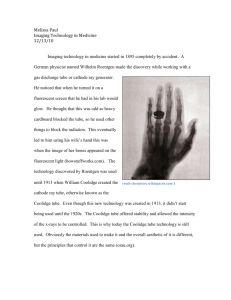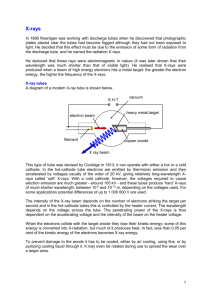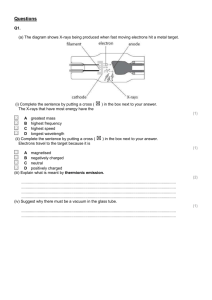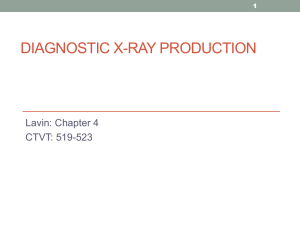Professional Development Award in Dental Radiography
advertisement
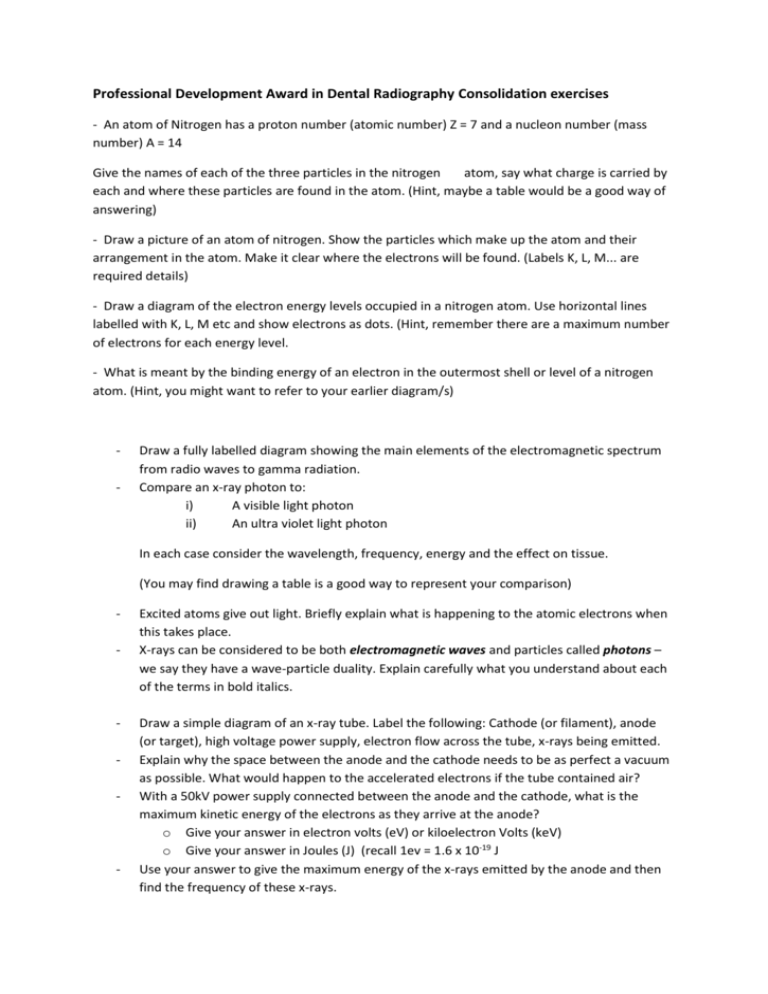
Professional Development Award in Dental Radiography Consolidation exercises - An atom of Nitrogen has a proton number (atomic number) Z = 7 and a nucleon number (mass number) A = 14 Give the names of each of the three particles in the nitrogen atom, say what charge is carried by each and where these particles are found in the atom. (Hint, maybe a table would be a good way of answering) - Draw a picture of an atom of nitrogen. Show the particles which make up the atom and their arrangement in the atom. Make it clear where the electrons will be found. (Labels K, L, M... are required details) - Draw a diagram of the electron energy levels occupied in a nitrogen atom. Use horizontal lines labelled with K, L, M etc and show electrons as dots. (Hint, remember there are a maximum number of electrons for each energy level. - What is meant by the binding energy of an electron in the outermost shell or level of a nitrogen atom. (Hint, you might want to refer to your earlier diagram/s) - Draw a fully labelled diagram showing the main elements of the electromagnetic spectrum from radio waves to gamma radiation. Compare an x-ray photon to: i) A visible light photon ii) An ultra violet light photon In each case consider the wavelength, frequency, energy and the effect on tissue. (You may find drawing a table is a good way to represent your comparison) - - - Excited atoms give out light. Briefly explain what is happening to the atomic electrons when this takes place. X-rays can be considered to be both electromagnetic waves and particles called photons – we say they have a wave-particle duality. Explain carefully what you understand about each of the terms in bold italics. Draw a simple diagram of an x-ray tube. Label the following: Cathode (or filament), anode (or target), high voltage power supply, electron flow across the tube, x-rays being emitted. Explain why the space between the anode and the cathode needs to be as perfect a vacuum as possible. What would happen to the accelerated electrons if the tube contained air? With a 50kV power supply connected between the anode and the cathode, what is the maximum kinetic energy of the electrons as they arrive at the anode? o Give your answer in electron volts (eV) or kiloelectron Volts (keV) o Give your answer in Joules (J) (recall 1ev = 1.6 x 10-19 J Use your answer to give the maximum energy of the x-rays emitted by the anode and then find the frequency of these x-rays. - - - (Clue: Use E=hf where h is Plancks constant h = 6.626 x 10-34 Js Use your answer for frequency to find the minimum wavelength of the x-rays given out from the x-ray tube. (Clue: Use Speed of light (c) = Frequency (f) x Wavelength (λ). The speed of light is 3x108m/s) The light given out from one atom produces a set of lines of different energy. We call these spectral lines. No two atoms will give out the same light and will therefore produce a different set of spectral lines. By considering two different atoms (e.g. hydrogen and helium) explain why their line spectra must be different. A graph of x-ray intensity (number of photons) on the y axis is plotted against x-ray Energy on the x axis. For an x-ray tube with a 70kV voltage applied across it sketch a typical spectrum making the following features clear: o The characteristic lines in the spectrum o The continuous spectrum o The maximum energy for these x-rays If the tube voltage is now increased to 90kV state and explain what changes would occur? If the tube voltage was reduced to 50kV state and explain what changes would occur? - An x-ray tube requires two different power supplies: o A high voltage one to give the electrons a high kinetic energy by the time they arrive at the anode o A low voltage, but high current, supply at the cathode to cause a large number of electrons to be emitted each second. In each case draw a simple diagram of the transformer used and explain how it achieves its aim. - State and explain briefly how the x-rays emitted from a tube vary when we separately increase the: o Tube voltage o Filament current A sketch of x-ray spectra (continuous and line) would help your explanation - The distance from an x-ray source is important when considering the intensity of the x-rays being received. X-rays are said to obey an inverse-square law of intensity versus distance from the source. In simple terms explain what is meant by the terms in italics. A diagram may help your explanation. - Photoelectric absorption and Compton absorption are the main processes where by x-rays are absorbed by matter. State and explain how each of these absorption processes are affected by the proton number (Z) of the absorbing material and the photon energy (E). - - - Considering the scatter observed in compton scatter, explain what is likely to happen when the energy of an incoming x-ray photon colliding with an outer shell electron, is increased from 30 keV to 90 keV. (Hint, think percentage of forward or back scatter). In radiation dosimetry we use the terms absorbed dose and dose equivalent. In simple terms explain the difference between each of these terms, giving the SI unit in which each term is measured. We are all exposed to background radiation throughout our lives. Explain the main sources of background radiation. State and explain the two main sources of background radiation to which we are all exposed.

